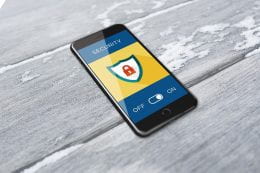 It’s that time of year when many are going on vacation or planning to do so. It’s important to prioritize cybersecurity, even when you’re on vacation.
It’s that time of year when many are going on vacation or planning to do so. It’s important to prioritize cybersecurity, even when you’re on vacation.
By taking a few simple precautions, you can enjoy your vacation without compromising your online security. Follow some simple practices to keep you safe from cybercriminals.
Preparing to go
- Travel lightly – Limit the number of devices you take with you on your trip. The more devices you take with you, the more risk you open yourself up to.
- Check your settings – Check the privacy and security settings on web services and apps. Set limits on how and with whom you share information. You might want to change some features, like location tracking when you are away from home.
- Set up the “find my phone” feature – Not only will this feature allow you to locate your phone, but it also gives you the power to remotely wipe data or disable the device if it gets into the wrong hands.
- Password protect your devices – Set your devices to require the use of a PIN, passcode or extra security feature like a fingerprint or facial scan. This will keep your phone, tablet or laptop locked if it is misplaced or stolen.
- Update your software – Before hitting the road, ensure all the security features and software is up-to-date on your devices. Keep them updated during your travels by turning on “automatic updates” on your devices.
- Back-up files – If you haven’t backed up the data on your devices, like photos, documents, or other files, do so before heading on vacation. If your device is lost, stolen, or broken, you won’t lose all your data. You can back up your data in the cloud, on an external device like a hard drive or both.
On the go
- Actively manage location services – Location tools come in handy while navigating a new place, but they can also expose your location ‒ even through photos. Turn off location services when not in use, and consider limiting how you share your location on social media.
- Use secure Wi-Fi – Do not transmit personal info or make purchases on unsecure or public Wi-Fi networks. Don’t access key accounts like email or banking on public Wi-Fi. Instead, use a virtual private network (VPN) or your phone as a personal hotspot to surf more securely.
- Think before you post – Think twice before posting pictures that indicate you are away. Wait until you get back to share your activities with the whole internet. You might not want everyone to know you aren’t at home.
- Protect physical devices – Ensure your devices are always with you while traveling. If you are staying in a hotel, lock them in a safe if possible. Don’t leave devices unattended or hand them over to strangers. Using your device at an airport or cafe? Don’t leave it unattended with a stranger while you go to the restroom or order another latte.
- Stop auto connecting – When away from home, disable remote connectivity and Bluetooth. Some devices will automatically seek and connect to available wireless networks. Bluetooth enables your device to connect wirelessly with other devices, such as headphones or automobile infotainment systems. Disable these features so that you only connect to wireless and Bluetooth networks when you want to. If you do not need them, switch them off. While out and about, these features can provide roving cybercriminals access to your devices.
- If you share computers, don’t share information – Avoid public computers in hotel lobbies and internet cafes, especially for making online purchases or accessing your accounts. If you must use a public computer, keep your activities as generic and anonymous as possible. Avoid inputting credit card information or accessing financial accounts. If you do log into accounts, such as email, always click “logout” when you are finished. Simply closing the browser does not log you out of accounts.
Click the Twitter button at the end of the article to share this post with others.
If you have any questions about keeping your devices safe while you travel, contact the IT Service Desk at 800-865-6143 or 785-532-7722 or via Live Chat. For face-to-face service, visit the IT Service Desk on the second floor of Hale Library.
Follow us on Twitter for IT News and Tips.